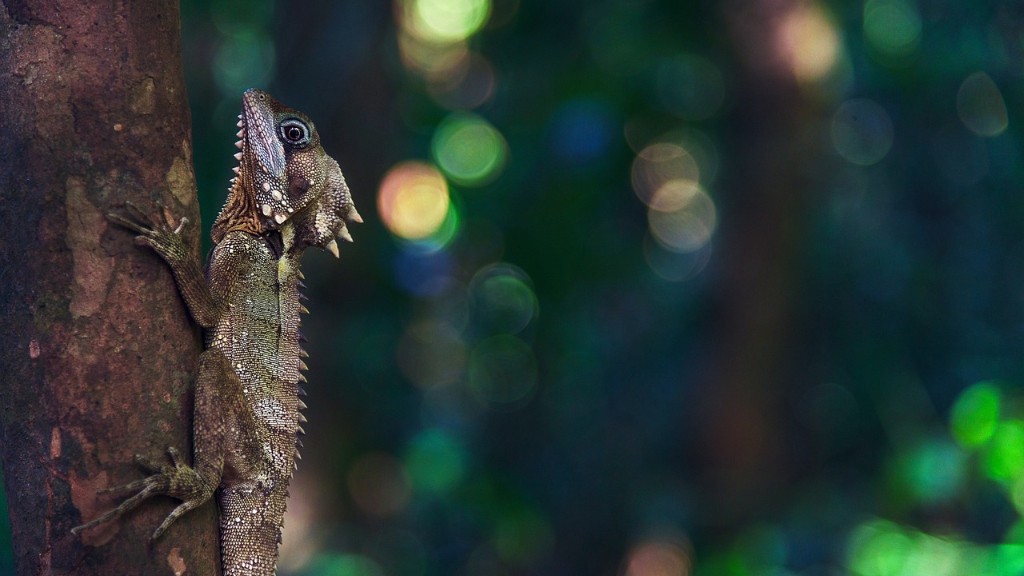Bearded dragons are popular pets known for their docile nature and unique appearance. As reptiles, they have specific dietary requirements that need to be met in order to ensure their health and well-being. One question that often comes up is whether bearded dragons can eat Madagascar roaches.
The short answer is yes, bearded dragons can eat Madagascar roaches. In fact, these nutritious insects can be a healthy and beneficial addition to their diet. However, it’s important to ensure that the roaches are properly sourced and prepared before feeding them to your pet.
Madagascar roaches, also known as hissing cockroaches, are native to the island of Madagascar. They are a popular choice among reptile owners because they are easy to care for and provide a good source of protein. These roaches are also larger in size compared to other types of cockroaches, making them a suitable prey item for adult bearded dragons.
According to reptile experts, feeding Madagascar roaches to bearded dragons can offer a range of benefits. These roaches are low in fat and high in protein, which is essential for the growth and development of bearded dragons. They also contain important vitamins and minerals, including calcium, which is important for maintaining strong bones and preventing metabolic bone disease.
Feeding bearded dragons a varied diet is crucial to ensure they receive a balanced nutritional intake. In addition to commercially-available reptile pellets and fresh vegetables, offering live insects like Madagascar roaches can enrich their diet and provide mental stimulation. This can help prevent boredom and encourage natural foraging behavior.
When sourcing Madagascar roaches, it’s important to purchase them from reputable breeders or suppliers. This ensures that the roaches are healthy and free from any pesticides or diseases that could harm your pet. It’s also recommended to avoid collecting roaches from the wild, as they may be exposed to toxins or parasites.
Before feeding Madagascar roaches to your bearded dragon, it’s essential to properly gut-load and dust them with calcium and vitamin supplements. Gut-loading involves feeding the roaches with nutritious foods, such as fresh fruits and vegetables, before offering them to your pet. Dusting involves lightly coating the roaches with calcium and vitamin powders to enhance their nutritional value.
In conclusion, Madagascar roaches can be a suitable and nutritious addition to a bearded dragon’s diet. When sourced properly and prepared correctly, they can provide important nutrients and enrichment for your pet. However, it’s always best to consult with a reptile veterinarian or experienced reptile owner for specific dietary recommendations based on your bearded dragon’s age, size, and overall health.
Section 1: Other Suitable Insects for Bearded Dragons
While Madagascar roaches are a great option, there are also other insects that can be part of a bearded dragon’s diet. Here are some common choices:
- Crickets: Crickets are widely available and are a staple in many bearded dragon diets. They are rich in protein and can be gut-loaded and dusted with calcium and vitamins.
- Mealworms: Mealworms are another popular choice, especially for younger bearded dragons. However, they should be fed in moderation due to their high fat content.
- Phoenix Worms: Phoenix worms, also known as black soldier fly larvae, are small yet packed with nutrients. They have a high calcium to phosphorus ratio, making them an excellent choice.
- Dubia Roaches: Dubia roaches are similar to Madagascar roaches and can be a suitable alternative. They have a softer exoskeleton compared to other roach species, making them easier to digest.
- Silkworms: Silkworms are another great option as they are highly nutritious and low in fat. They can be fed to bearded dragons of all ages.
Section 2: The Importance of Calcium Supplementation
Calcium supplementation is crucial for bearded dragons to maintain healthy bones, prevent metabolic bone disease, and support overall growth. While gut-loading insects with calcium-rich foods can help, it may not always be sufficient. Here are some key points about calcium supplementation:
- Dusting insects with calcium and vitamin powders is an effective way to boost their nutritional value before feeding them to your bearded dragon.
- Bearded dragons have different calcium requirements depending on their life stage. Consult with a reptile veterinarian to determine the appropriate dosage for your pet.
- Providing access to a separate dish with calcium powder can allow bearded dragons to self-regulate their calcium intake when needed.
Section 3: The Dangers of Wild-Caught Insects
While it may be tempting to collect insects from the wild, this practice can pose risks to your bearded dragon’s health. Here are some reasons to avoid feeding wild-caught insects:
- Wild insects may carry pesticides or toxins due to environmental exposure, which can harm your pet.
- They could be infected with parasites that can be transmitted to your bearded dragon.
- It can be difficult to identify the exact species of wild-caught insects and whether they are safe for consumption.
Section 4: Monitoring Dietary Habits and Adjustments
Observing your bearded dragon’s eating habits and making necessary adjustments to their diet is essential for their well-being. Here are some tips on monitoring their dietary habits:
- Keep track of how much your bearded dragon is eating, ensuring they are consuming an appropriate amount for their size and age.
- Monitor their weight regularly to ensure they are neither gaining nor losing weight too rapidly.
- Consult with a reptile veterinarian if you notice any changes in your bearded dragon’s appetite, digestion, or overall health.



